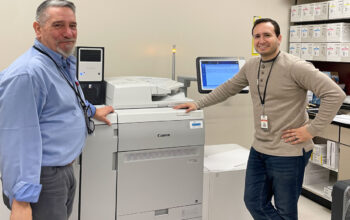Emilia Savini, Editor-in-chief
@ESaviniCourant
For most students, changing for gym class requires going to the locker room, opening your locker and changing into gym clothes. By the same token, most students use the restroom by raising their hand, asking the teacher and entering the bathroom. While these everyday behaviors may seem involuntary to most people, for transgender students, these daily tasks are not as simple.
The transgender community is not only becoming more prevalent on a global scale, but also at NCHS. All transgender identities are developing day-to-day, and NCHS has begun the process of educating the staff about what it means to be transgender, so that they can make adjustments to fit the needs of transgender students.
Transgender freshman Sam*, notes the difference between sexual orientation and gender identity; two terms that they believe are often misunderstood. “Opposed to sexual orientation, where it is more about embracing who you love, being transgender is more about accepting who you are and how you see yourself,” they said.
In comparison to the high school experience of a cisgender student, Jamie* notes that transgender students have to keep their guard up at all times to defend their true identity. “As a part of the LGBT community, you always have to be ready to protect or defend yourself,” they said. “When a cisgender person meets new people they have nothing to worry about except maybe being a little socially awkward, but when you’re LGBT, there’s a very real possibility that new people might hate you right off the bat because of your identity.”
Safety and accommodations
Sam* feels as though NCHS has made notable accommodations for transgender students who feel uncomfortable in the school’s gender specific facilities. “As trans students, the administration has made ways for us to use the bathroom and change without putting us out of our comfort zones,” they said. “Also, trans students are allowed to make further accommodations if they still are not feeling all that positive about it.”
School psychologist Sandra Warkentin believes that so far, NCHS has made some positive first steps in addressing the presence of transgender students. “I think that we are doing a good job of addressing the presence of transgender students in the school because thankfully the kids are coming forward, self-disclosing, asking for help and giving us permission to share with teachers what names and pronouns they prefer,” Ms. Warkentin said.
Bathrooms, locker rooms and sports teams
According to the Connecticut Safe School Coalition, current Connecticut state law states that, “transgender students should be permitted to participate in sex-segregated athletic activities based on their gender identity.”
When it comes to participating in sports, Sam* has faced many obstacles as a female to male transgender athlete who joined the football team. “My teammates would giggle a bit because I was the only girl-I wasn’t out yet- on the team,” they said. “I started to break down a bit mid-season because I truly felt like nobody believed in me.”
Although Jamie* has not participated in sports at NCHS, they have faced issues in the locker rooms while changing for gym class. “I use the girls’ locker room, and I hate it. It reminds me that I have a female body, which is something I strongly dislike,” they said. “If I passed for masculine in any way, it’s ruined by the locker room. I worry that people are thinking of me as a girl.”
When it comes to school policy and the possible implementation of gender neutral bathrooms and locker rooms, Ms.Warkentin states that the school must operate in accordance with the current Connecticut state law until new policy is passed. “I would imagine that down the line, it [gender neutral facilities]will be mandated. But right now we have to operate under the Connecticut law that they are permitted to use the bathroom and locker room that is associated with their gender of choice,” Ms. Warkentin said. “So if you are transitioning from male to female, then you have rights to use the female bathroom and locker room.”
Use of preferred pronouns
A transgender sophomore, Jamie* feels that NCHS is a safe place for transgender students, however, they hope that the use of proper pronouns for individuals will be addressed in the near future. “Most people still use female pronouns with me and it makes me feel disrespected; I feel like people just see me as a girl who dresses up like a boy sometimes,” they said. “I think if English teachers could talk about gender neutral singular pronouns, it would be easier to explain to others.”
Sam* has faced similar struggles with peers not using their preferred pronouns and hopes that the school can address the issue so that transgender students do not feel uncomfortable being verbally addressed in school. “There have been moments when somebody has used the wrong pronouns in front of the entire class during a presentation when we had to introduce each other, and it was a very cringe worthy moment,” they said.
Ms. Warkentin recognizes that it can be difficult to implement gender neutral pronouns into one’s daily speech when necessary, but ensures that it is a part of the learning process for teachers. Teachers will be further educated on transgender youth in a seminar for the faculty in November. “At least the students I work with are being very patient and educating me as we go along,” Ms. Warkentin said. “What is important to me is that if teachers or I screw up a pronoun, it is not a form of judgement or my unwillingness to do it, but that this is new for everybody and we are all catching up.”
Resources and support
School psychologist Maria Calcagni notes that herself and other faculty members are there to support the needs of transgender students, and even be a voice for them if they feel uncomfortable in certain situations. “We have some students that would prefer to disclose this to teachers on their own so we support that. And we have some students that don’t necessarily want to do that, and they want to see us as their advocate” Ms. Calcagni said. “We are really just trying to meet them wherever they are in this whole process and help them to feel included in school.”
Ms. Calcagni hopes that students recognize and utilize the various resources available to students within the school. “Certainly, the students have resources here in the school; their counselors, social workers, we as school psychologists, and we also have our Kids in Crisis outreach worker who is very involved,” Ms. Calcagni said.
Ms. Warkentin adds that the school psychologists are in the process of gathering more resources for students, outside of NCHS. “We did get the name of a wonderful therapist that everyone who I have sent there, said that he is filled so we are working on putting together a list of resources for students,” Ms. Warkentin said.
Goals for NCHS
Looking into the future, Sam* hopes that all of NCHS will see transgender students as capable individuals that are just like their peers. “Overall, I want to show people that a transgender person can do just as much as anyone else,” they said. “It may take a little more effort and creativity but the objective is to prove our worthiness and not be underestimated.”
Similarly, Jamie* wants to see the social environment at NCHS as more inclusive and accepting to transgender students. “I hope that transgender students won’t be treated like burdens on the school, because turning the school into a trans-inclusive place won’t be hard,” they said. “Being trans does not mean you deserve to be bullied more than anybody else. The school should treat transgender students like any other student while also offering them support.”
Ms.Calcagni notes that in the grand scheme, the NCHS community is gaining awareness of the transgender population and becoming educated on the needs and changes that need to be addressed. “I think it is opening all of our eyes to what their needs are, and we are making some changes and trying to become educated, so that we all have a common understanding.”
*Names have been changed
Transgender Terminology
According to the Ohio University LGBT Center, here are some definitions of terms commonly used in reference to the transgender community.
Cisgender: Someone whose gender identity matches the gender they were assigned at birth, someone who is not trans. The Latin prefix cis means “on the same side of.” Cisgender is often shortened to cis.
Agender: Some agender people would define their identity as being neither a man nor a woman while others would define agender as not having any gender.
Gender identity: An individual’s internal sense of what gender they are. One’s gender identity may or may not align with their assigned gender, and one’s gender identity is not visible to others.
Misgender: The act of attributing a person to a gender they do not identify as. You can cut down on misgendering people by trying to not practice gender attribution, and by asking people their preferred pronouns and terms when appropriate.
Genderfluid: This term can be used as a specific identity or as a way of articulating the changing nature of one’s gender identity or expression. People who are genderfluid may feel that their gender identity or expression is constantly changing, or that it switches back and forth.
LGBT: A common acronym which stands for lesbian, gay, bisexual, and transgender/trans. There are other variations similar to this acronym, such as LGBTQQIAA which stands for lesbian, gay, bisexual, transgender/trans, queer, questioning, intersex, asexual, and ally.



